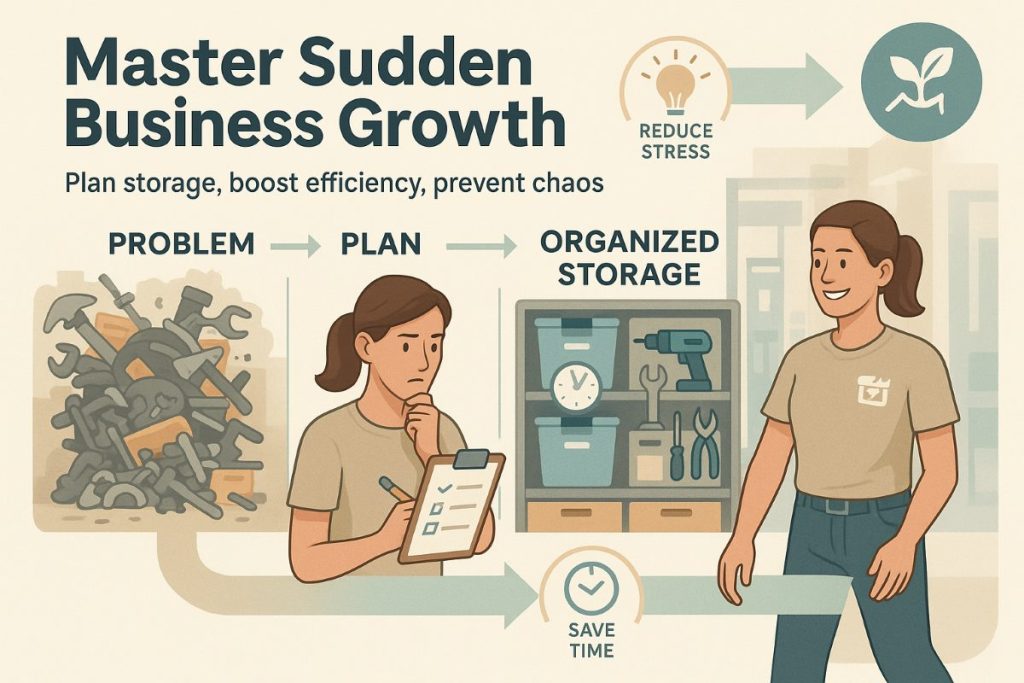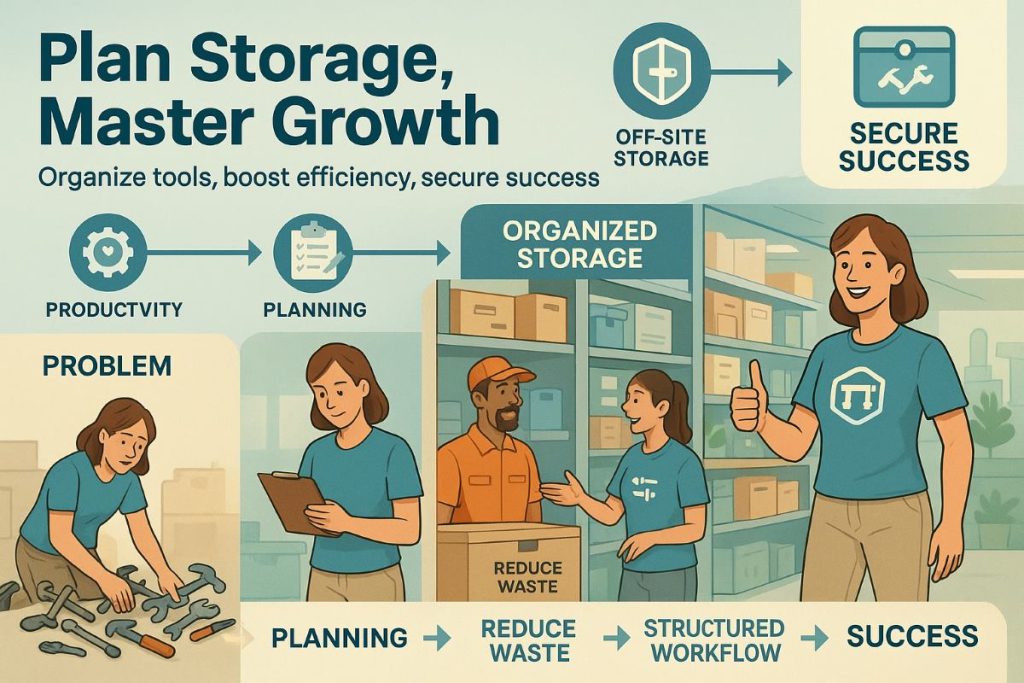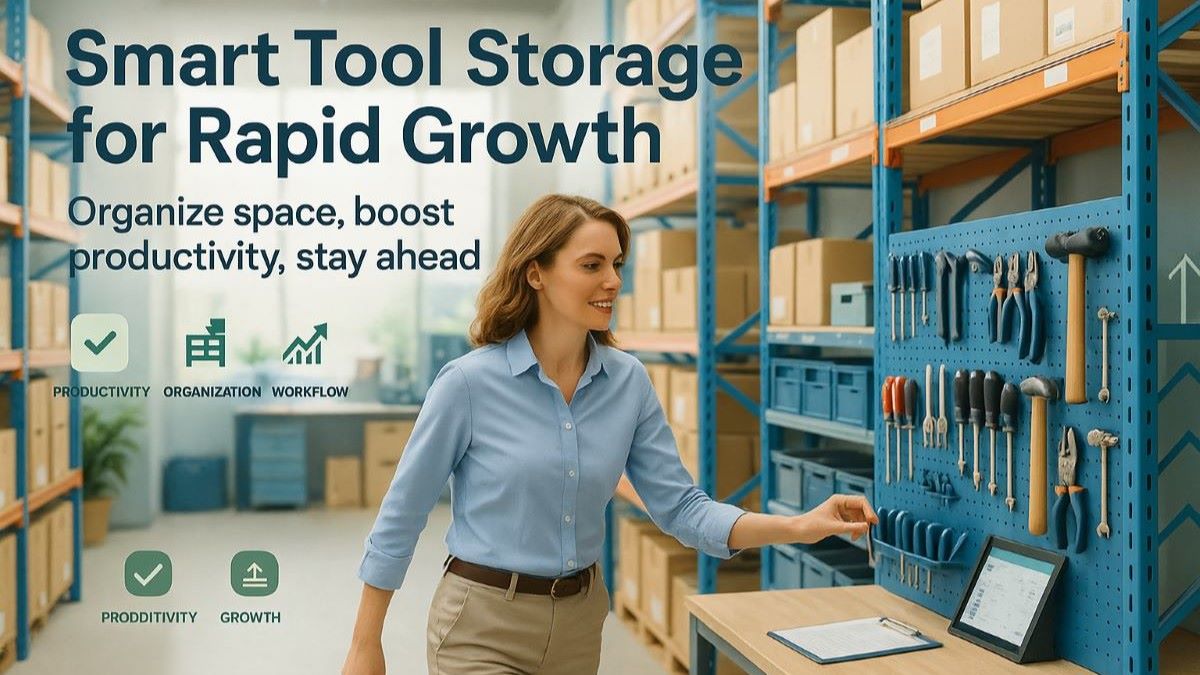When a business starts growing quickly, space becomes one of the first things to run out. Warehouses, offices, and workshops can fill up fast with equipment, tools, and supplies. Finding
When a business starts growing quickly, space becomes one of the first things to run out. Warehouses, offices, and workshops can fill up fast with equipment, tools, and supplies. Finding effective ways to store these items without disrupting daily work is essential for smooth growth. Choosing the right approach early can prevent expensive mistakes and wasted time later on.
Growth often happens faster than expected. Many businesses end up balancing expansion with keeping operations organized. That means making decisions about what tools stay on-site and what gets stored elsewhere. Planning and structure can help prevent clutter and keep productivity high. Careful tool storage planning and structure can help prevent clutter and keep productivity high.
Observation:
When companies grow, storage isn’t just about space. It’s about keeping everything accessible, safe, and easy to manage. A smart system means tools are always ready when needed, and employees can focus on their work, not on searching through piles of equipment.
Handling Sudden Growth

When a business begins to grow quickly, things can change almost overnight. A workshop that once had plenty of room can suddenly feel crowded. Tools pile up, new equipment arrives, and daily operations become harder to manage. It’s not just about lacking space—it’s about maintaining structure and efficiency while everything around is expanding. Rapid expansion requires not only more space but also business growth strategies that optimize tool storage and workflow efficiency. Growth brings opportunity, but without a clear plan, it can also bring chaos
.
Companies often overlook the impact of physical space on productivity. When tools aren’t easy to find or equipment gets in the way, valuable time is lost. This is why creating a plan for where and how to store resources matters just as much as financial and operational planning.
Expert statement:
According to a logistics consultant, businesses that plan their storage early reduce growth-related disruptions by nearly half. Organized space leads to better productivity, lower costs, and less employee stress. A clear system keeps operations smooth, even during periods of rapid change.
Tool Storage Challenges
Many businesses don’t expect storage to become such a big issue, but it often does. As companies scale up, the number of tools and equipment grows faster than the space to hold them. What once worked for a small team may no longer fit a growing operation.
A unique way to look at this is to treat storage not as an afterthought but as part of your growth strategy. Think about space as a flexible resource that should grow with the business. Planning storage like other key investments can help avoid wasted time, lost tools, and expensive reorganizations later on.
Smart Space Management
When businesses grow quickly, they often face similar storage questions. Here are some clear and simple answers to the most common concerns.
How can fast-growing businesses store tools without cluttering their workspace?
The best approach is to separate what’s needed daily from what can be stored off-site. This keeps the main work area organized and easier to navigate, which saves time and reduces accidents.
What type of storage works best for heavy or valuable tools?
Durable shelves, climate-controlled rooms, and off-site storage can all work well. For larger or less frequently used equipment, using secure self storage in Fort Myers can help keep the workspace clear while keeping everything safe and accessible.
How do you decide what should stay on-site?
Keep tools that are used daily or weekly close to where the work happens. Less frequently used tools should be stored in a more structured space to avoid overcrowding and confusion.
Why does tool organization matter for growing businesses?
An organized workspace supports smoother workflows, protects valuable equipment, and saves money by reducing lost or damaged tools.
External Storage Solutions
A strong storage strategy doesn’t have to be complicated. The right actions, taken early, can make scaling smoother and more efficient. Here are some practical tips to follow.
- Separate daily-use tools from rarely used ones.
- Label storage areas clearly to save time.
- Use shelving and racks to maximize space.
- Keep pathways open for safe movement.
- Revisit your storage layout regularly.
- Train employees on proper storage habits.
- Invest in quality containers and locks.
Benefits vs risks:
The benefits of proper storage include better workflow, improved safety, and reduced replacement costs. The risks of neglecting it involve tool loss, damaged equipment, and cluttered spaces that slow down operations. A simple plan makes a lasting difference.
Long-Term Planning Tips

A mid-sized construction company experienced a major challenge when it doubled in size within a single year. Their small warehouse quickly became overcrowded, making it difficult to keep track of expensive tools and specialized equipment. Jobs started taking longer because crews were wasting time searching for items. Instead of building a new facility right away, they created a clear storage system and reorganized how they used their space.
First, they separated frequently used tools from seasonal ones. Then they moved non-essential items into a secure off-site space, freeing up room to work more efficiently. Employees were trained to return items to the right place after each shift, ensuring the system stayed consistent. Within a few months, the company saw measurable improvements in productivity and fewer lost or damaged tools. Growth no longer felt chaotic—it became structured and controlled.
Key takeaway summary:
Planning storage during business growth isn’t just about saving space. It’s about creating a structure that supports smoother workflows, reduces waste, and protects investments. Even small organizational changes can lead to big improvements in efficiency. Long-term success often starts with clear, simple steps taken at the right time.
Final Thoughts
Scaling up can be exciting but also messy without the right structure. Every tool, every shelf, and every corner of your space plays a role in how well your business runs. When growth happens fast, planning how and where things are stored gives teams more time to focus on their work.
The key to staying ahead is building a system that supports your pace. Where businesses keep their tools when scaling up fast often shapes how smoothly they grow tomorrow.
Respond to this article with emojis






